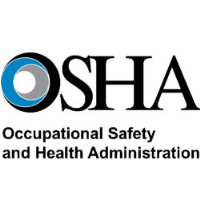Is OSHA Missing the Boat by Ignoring Long-Term Health Threats to Workers?

The Occupational Safety and Health Administration (OSHA) regularly focuses on immediate threats to employees in the workplace, while giving little attention to long-term concerns that can impact the well-being of individuals and the U.S. economy.
In a story by Ian Urbina in The New York Times that focuses on the situation at Royale Comfort Seating of Taylorsville, North Carolina, OSHA stands accused of largely ignoring long-term threats to worker safety.
It is noted that the watchdog agency devotes most of its budget and efforts to addressing more imminent dangers rather than preventing “the silent, slow killers that, in the end, take far more lives.”
For instance, OSHA spent about 40 years writing new standards to limit exposure to 16 deadly workplace hazards, including lead, asbestos and arsenic.
Meanwhile, it largely ignored thousands of other dangerous substances handled by American workers on a daily basis.
David Michaels, OSHA’s director, admitted that the system is “broken” when it comes to the agency dealing with workplace health threats, allowing “tens of thousands of people” to “end up on the gurney,” he told The New York Times.
Long-term health problems occurring on the job cost the American economy approximately $250 billion annually, including medical expenses and lost productivity.
About $27 billion of these medical costs are born by federal health programs, such as Medicare and Medicaid.
-Noel Brinkerhoff
To Learn More:
As OSHA Emphasizes Safety, Long-Term Health Risks Fester (by Ian Urbina, New York Times)
OSHA Refuses to Issue Rule Protecting Workers from Extreme Heat (by Noel Brinkerhoff, AllGov)
OSHA Averages One Workplace Safety Regulation a Year (by Noel Brinkerhoff, AllGov)
- Top Stories
- Unusual News
- Where is the Money Going?
- Controversies
- U.S. and the World
- Appointments and Resignations
- Latest News
- Trump to Stop Deportations If…
- Trump Denounces World Series
- What If China Invaded the United States?
- Donald Trump Has a Mental Health Problem and It Has a Name
- Trump Goes on Renaming Frenzy






Comments